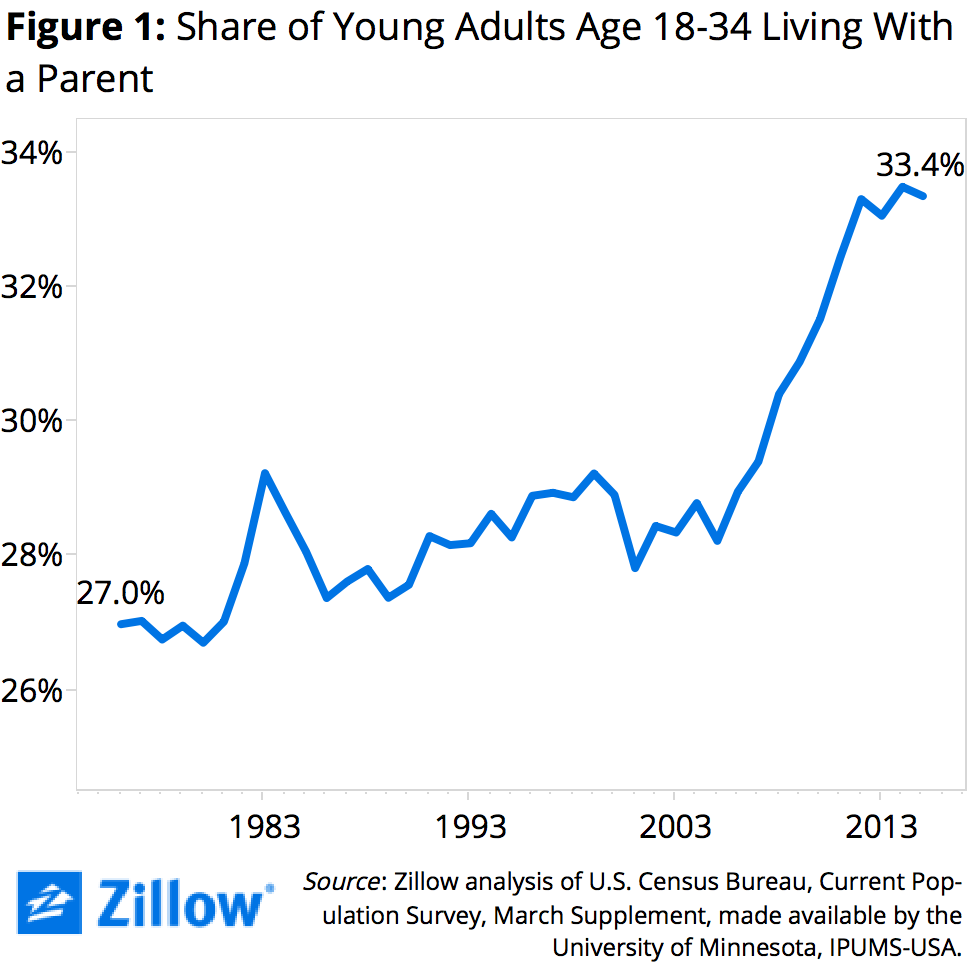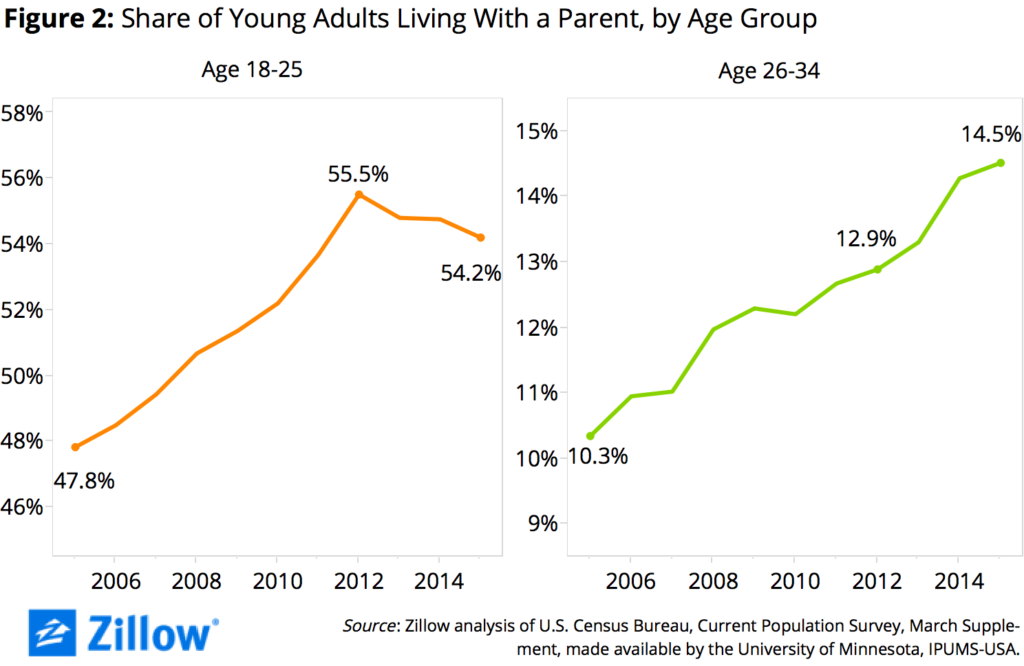Older Millennials Driving Increase in Young Adults Living at Home
Over the past decade, there has been a sharp increase in the share of young adults living with their parents. But lately, the increase isn’t necessarily because the youngest adults aren’t leaving the nest – instead, it’s being driven their older brothers and sisters in their late 20s and early 30s.
Over the past decade, there has been a sharp increase in the share of young adults living with their parents. But lately, the increase isn’t necessarily because the youngest adults aren’t leaving the nest – instead, it’s being driven by their older brothers and sisters in their late 20s and early 30s.
 In 2005, the eve of the Great Recession, 28.2 percent of young adults aged 18-to-34 lived with a parent, step/foster parent or grandparent, according to an analysis of U.S. Census data. The share shot up to 33.5 percent by 2012, and has largely stabilized at that level since (figure 1). This increase in the share of young adults living with their parents between 2005 and 2012 was more than three times larger than the increase in the share of young adults living with their parents during the early 1980s recession.
In 2005, the eve of the Great Recession, 28.2 percent of young adults aged 18-to-34 lived with a parent, step/foster parent or grandparent, according to an analysis of U.S. Census data. The share shot up to 33.5 percent by 2012, and has largely stabilized at that level since (figure 1). This increase in the share of young adults living with their parents between 2005 and 2012 was more than three times larger than the increase in the share of young adults living with their parents during the early 1980s recession.
In general, the share of young adults in their late teens and early twenties who live with their parents is much higher than the share of older young adults who live with their parents. In 2005, 47.8 percent of younger adults between the ages of 18 and 25 lived with a parent, compared to 10.3 percent of (slightly older, still young) adults between the ages of 26 and 34.
From 2005 to 2012, the share of younger adults living with a parent increased by 7.7 percentage points, peaking at 55.5 percent. Among older young adults, the share increased by 2.5 percentage points over the same period, reaching 12.9 percent by 2012. And during the Recession, the share of younger adults (aged 18-to-25) living with a parent increased more sharply than the share of older young adults (aged 26-to-34).
But in the years since 2012, the share of 18-to-25-year-olds living with a parent has started to decline, while it has continued increasing among 26-to-34-year-olds (figure 2).

There are a few potential reasons for this. Younger adults may be finding stronger job prospects in a largely recovered labor market even as their older peers continue to struggle, perhaps scarred by tough employment prospects in their early working years. Younger adults might also be willing to live with roommates or in less-expensive (often lower-quality) housing than their older peers. Regardless of the precise reason, the apparent stability over the past three to four years of the share of young adults overall who live with their parents masks starkly diverging trends across more specific age groups.


